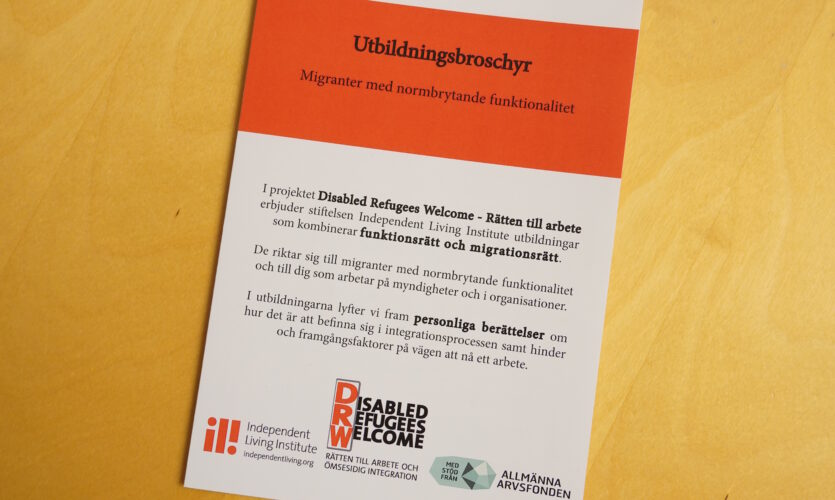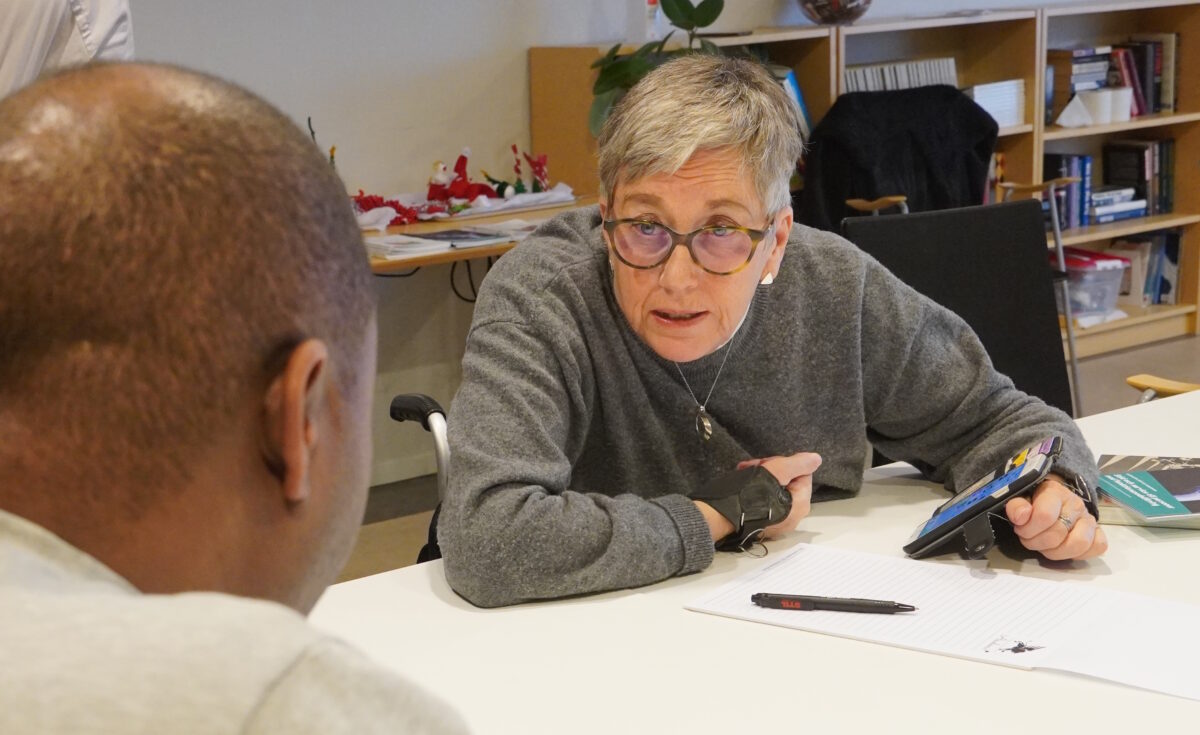There is a lack of knowledge about the problems that migrants with disabilities face when they come to Sweden. They must overcome many obstacles to be able to join society. These are the words of Suzanne Elmqvist, head of education for the project.
“When migrants meet government officials and civil society, they need to be able to trust that the people they meet have the right skills to provide the right support.
Follow this link to download the project’s brochure on training.
There is a booklet Tools for increased inclusion to download.
And at this e-mail address you can order printed copies of the above publications: info@disabledrefugeeswelcome.se. (All are in Swedish)
That the project will hold training courses, both for the project’s primary and secondary target groups, was written in the project application that was sent to the Swedish Inheritance Fund. Experiences from our previous project Disabled Refugees Welcome (DRW) were that the level of knowledge in this area is generally very low among, for example, staff at local and national authorities (secondary target group) who meet migrants with disabilities (the primary target group).
“This applies to everything from the first meeting with Sweden at the Swedish Migration Agency to all contacts with the municipality, healthcare, the Swedish Public Employment Service, etc.,” says Suzanne Elmqvist, who is responsible for the project’s training and who has a long history in the disability movement, where she has worked for a long time at DHR, for example.
The lack of knowledge can be seen in many ways in society,” she says.
– That everyone is expected to have their own mobile phone to communicate with, that meetings are arranged in inaccessible premises, letters from authorities that are difficult to interpret, etc., etc. Our Swedish system does not make it easy to integrate.
Intersectionality unseen
Among other things, the shortcomings are evident in the inability to understand how intersectionality works. Intersectionality means that several grounds of discrimination are combined, as in the case of the project’s target group; Having a disability and being a newcomer, which often means very limited opportunities for support, little financial resources and that the person’s network is often very small.

“It’s absolutely dire that, for example, people with great difficulty walking have been assigned a residence with stairs. Which meant that the person in question could not go out and which in turn resulted in social isolation. The case officers may have followed their regulations but have not found out how the disability affects this particular person.
Difficult to function without support
Another example that Suzanne brings up is the implications of the limited opportunities for support that refugees from Ukraine have. By being here “temporarily”, as is intended under the Temporary Protection Directive, they have a very limited right to support in the form of home care services, personal assistance and other benefits that other people with disabilities have.
“Without support for assistive devices, for example, it is difficult to function in society. That’s what intersectionality is all about. That the whole is lost and that the person’s rights are not met.
Knowledge is power – education about the history of the disability movement
The project also provides training directly to the so-called primary target group, i.e. migrants with disabilities. It is very important to learn about our history, about the Independent Living philosophy and about our rights,” says Suzanne Elmqvist.
“It is incredibly inspiring to understand the struggles that people with disabilities have made and that it is thanks to them that the UN Convention on the Rights of Persons with Disabilities (CRPD) exists.
Can have a profound impact
She also says that many who come are stigmatized and learning about the history of the movement can strengthen them deeply.
“Having a disability can be seen as God’s punishment or that one’s parents have sinned. To get to know others in the same situation, gain knowledge about the “disability movement” and understand the struggle behind our rights creates empowerment.
Another thing is to understand that Sweden and other Western countries are far from perfect, and to have “moderately” high expectations.
“Many migrants believe that Sweden is some kind of ‘Disability Rights Paradise’. When they face reality, it clashes with the expectations and hopes that the person has for a life in Sweden.
“We adapt the courses to your needs!”
The project has, among other things, held a training course for the Swedish Agency for Participation and their network “Migration and Disability”, with the County Administrative Board and DHR.
“The response to the evaluation survey has been very positive,” says Suzanne Elmqvist.
Finally, she encourages everyone to visit our website and check out our range of training courses.
“We adapt the courses to the client’s needs and wishes, both digitally and on site, how long the training should be, etc. We also have a booklet, Tools for increased inclusion, where we have collected a number of tips on how to improve the meeting with migrants with disabilities. We also offer a workshop for those authorities or organizations that want to become better at increasing inclusion.
Big picture: Suzanne Elmqvist in conversation with one of the participants in the project at a work café.
